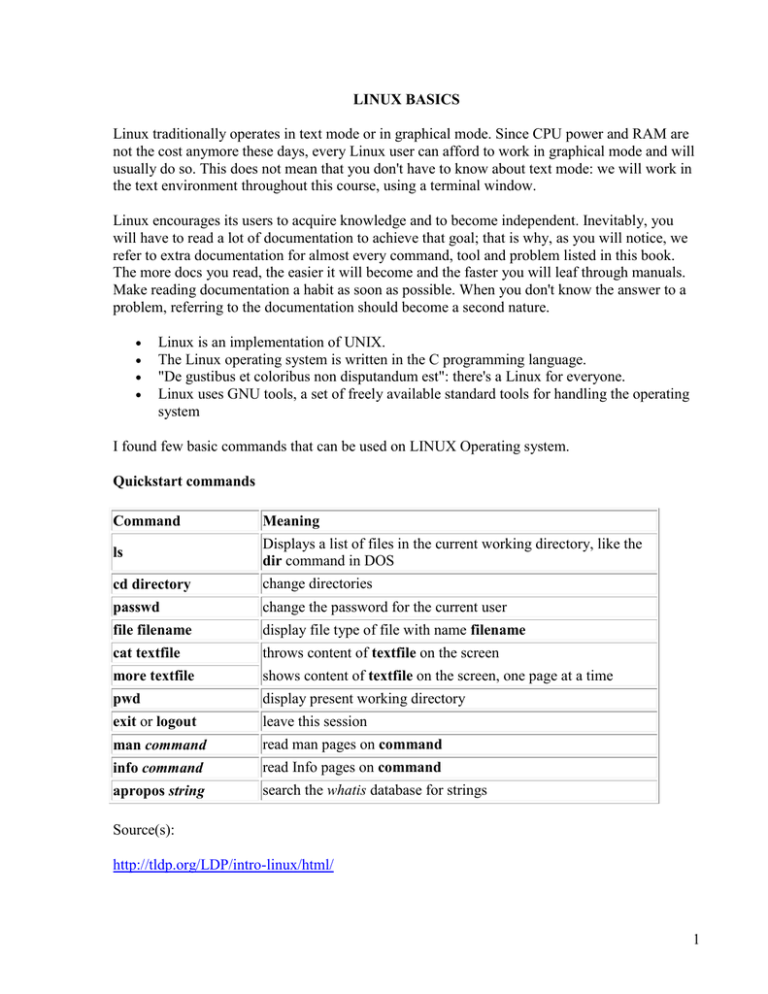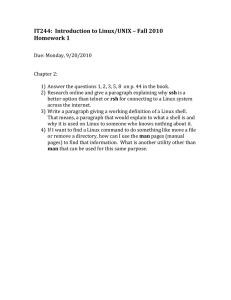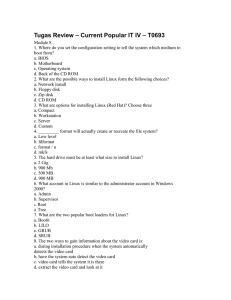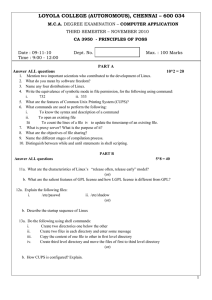Linux traditionally operates in text mode or in graphical mode.... not the cost anymore these days, every Linux user can... LINUX BASICS
advertisement

LINUX BASICS Linux traditionally operates in text mode or in graphical mode. Since CPU power and RAM are not the cost anymore these days, every Linux user can afford to work in graphical mode and will usually do so. This does not mean that you don't have to know about text mode: we will work in the text environment throughout this course, using a terminal window. Linux encourages its users to acquire knowledge and to become independent. Inevitably, you will have to read a lot of documentation to achieve that goal; that is why, as you will notice, we refer to extra documentation for almost every command, tool and problem listed in this book. The more docs you read, the easier it will become and the faster you will leaf through manuals. Make reading documentation a habit as soon as possible. When you don't know the answer to a problem, referring to the documentation should become a second nature. Linux is an implementation of UNIX. The Linux operating system is written in the C programming language. "De gustibus et coloribus non disputandum est": there's a Linux for everyone. Linux uses GNU tools, a set of freely available standard tools for handling the operating system I found few basic commands that can be used on LINUX Operating system. Quickstart commands Command Meaning ls Displays a list of files in the current working directory, like the dir command in DOS cd directory change directories passwd change the password for the current user file filename display file type of file with name filename cat textfile throws content of textfile on the screen more textfile shows content of textfile on the screen, one page at a time pwd display present working directory exit or logout leave this session man command read man pages on command info command read Info pages on command apropos string search the whatis database for strings Source(s): http://tldp.org/LDP/intro-linux/html/ 1






